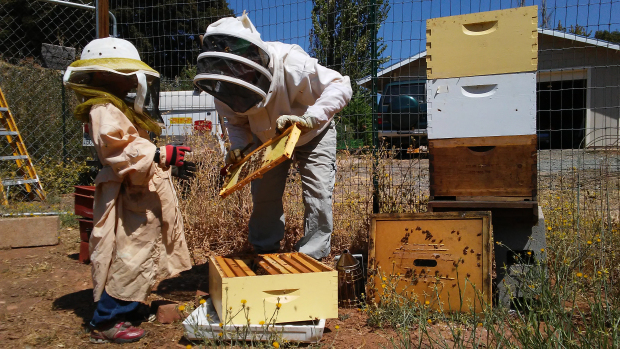The most challenging aspect of beekeeping is learning the names and functions of so many things beekeeping terms. The new beekeeper is faced with hundreds of new bee words and ideas. Without an understanding of important beekeeping terms, it is difficult to practice good hive management and continue beekeeping. The new beekeepers may have to learn all the important beekeeping terminology.
The most common beekeeping terms that every new beekeeper should know. These words form a good foundation of bee knowledge and help tremendously in beekeeping.
It is extremely necessary to understand the idea behind basic beekeeping terms. Otherwise, you might perform an action on your colonies that is detrimental to the health of beehives.
Abdomen
The third region of the body of a bee encloses the honey stomach, true stomach, intestine, sting, and reproductive organs.
Absconding swarm
It is an entire colony of bees that abandons the hive because of disease, wax moth, excessive heat or water, lack of resources, or other reasons.
Afterswarm
It is a small swarm that may leave the hive after the first or primary swarm has departed.
Apiary
An apiary is a group of bee colonies, hives, and other equipment assembled in one location for beekeeping operations. An apiary is also known as a Bee yard.
American foulbrood
A disease caused by a spore-forming bacterium (Paenibacillus larvae subspecies larvae). Develops in the gut of the larva and kills it after the cell is sealed. This causes sunken and perforated cappings which help in identifying the disease.
Apiculture
The science and art of raising honey bees in a beehive.
Apismellifera
The species of the Western honey bee that originate in Europe and Africa and are now located around the world.
Paenibacillus larvae
The bacterium that causes American foulbrood.
Bait hive
A hive or a box placed in an elevated location is used to attract and hopefully capture swarms. A bait hive is a concept of urban beekeeping.
Beehive
Beehive is a box with movable frames is used for housing a colony of bees.
Bee space
3/8-inch space between combs and hive parts in which bees build no comb or deposit only a small amount of propolis. Bee spaces are used as corridors to move within the hive.
Brood
Brood is a group of immature bees that haven’t yet emerged from their cells. It can be in the form of eggs, larvae, or pupae of different ages.
Brood chamber
The part of the hive in which the brood is reared. It may include one or more hive bodies and the combs within.
Colony
The worker bees, drones, queens, and developing brood living together in one hive or more than one hive which is called a colony.
Comb
A mass of six-sided cells made by honey bees in which brood is reared and honey and pollen are stored; composed of two layers united at their bases.
Dextrose
One of the two principal sugars found in honey. It forms crystals during granulation.
Extraction
The process in which honey is drawn out of frames using centrifugal force with a honey extractor.
Extractor
It is a machine that removes honey from the cells of the comb by centrifugal force.
Fermentation
The process of yeast utilizing sugar as a food, and as a byproduct, producing alcohol. Honey typically does not have enough moisture for fermentation.
Hive
The structure is used by bees as their home.
Hive body
A wooden box that encloses the frames and is usually used as a brood chamber.
Hive stand
A structure that supports the hive.
Hive tool
A metal device that is used to open hives, pry frames apart, and scrape wax and propolis from the hive parts.
Honey
It is known as Liquid Gold with sweet viscid material produced by bees from the nectar of flowers, composed largely of a mixture of sugars dissolved in about 17 percent water. It contains small amounts of mineral matter, vitamins, proteins, and enzymes.
Queen Bee
A female bee with a fully developed reproductive system. The worker bee works around the queen bee.
Queen cage
A small cage in which a queen and three to five worker bees are confined so that they can work without any disturbance
Super
It is a part of a hive body used for the storage of surplus honey which the beekeeper will harvest. Normally it is placed over or above the brood chamber. Most commonly it is known as a Honey Super.
Worker bee
It is a female bee whose reproductive organs are undeveloped. The majority of the honey bees are worker bees and they do all the work in the colony except for laying fertile eggs.
For beekeeping you will need protective gears to save yourself from bee stings like: bee suit, bee jacket and gloves. From Bee Attire you can order such gears at affordable price.

